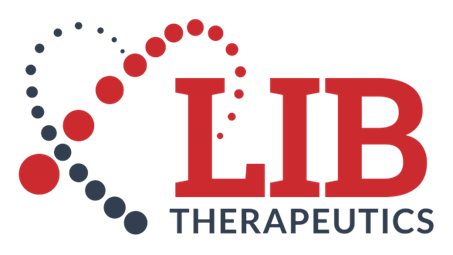News

Early and low for LDL cholesterol management post-MI
Early and low for LDL cholesterol management post-MI Patients with the earliest and largest LDL cholesterol reductions after myocardial infarction (MI) gain the most cardiovascular benefit, according to real-world data from a Swedish registry (1). Although clinical trials clearly show the cardiovascular benefits of targeting…
read more »
ODYSSEY OUTCOMES: Uncertainty persists about CV benefit at LDL cholesterol <25 mg/dL
ODYSSEY OUTCOMES: Uncertainty persists about CV benefit at LDL cholesterol <25 mg/dL This latest analysis from the ODYSSEY OUTCOMES Investigators sought to resolve uncertainty regarding additional cardiovascular benefit at very low LDL cholesterol levels. Recent guidelines have lowered LDL cholesterol goals in very high-risk patients,…
read more »
Early discontinuation of PCSK9 inhibitors problematic in practice
Over one-quarter of patients prescribed a PCSK9 inhibitor stop treatment within 6 months, according to this analysis of real-world practice. Landmark clinical trials – FOURIER with evolocumab and ODYSSEY OUTCOMES with alirocumab – have confirmed the benefit of PCSK9 inhibition, against a background of statin…
read more »
Higher PCSK9 levels in patients with peripheral artery disease
Results from the CAVASIC study indicate that higher PCSK9 levels associate with peripheral artery disease (PAD), independent of other lipid variables or cardiovascular risk factors. The CAVASIC (CArdioVAScular disease in patients with Intermittent Claudication) Study was initiated in Austria in 2002 to identify cardiovascular risk…
read more »
New Cochrane analysis reaffirms role for PCSK9 inhibitors
A new analysis including data on more than 60,000 patients reaffirms guideline recommendations for the use of PCSK9 monoclonal antibody therapy in high and very high-risk patients needing additional LDL cholesterol reduction to attain goals. This latest Cochrane analysis addressed a key question: What is…
read more »
New guidance for familial hypercholesterolaemia care in Australia
The FH Australasia Network Consensus Working Group has published new evidence-informed guidance to improve the care of familial hypercholesterolaemia (FH, inherited high cholesterol) in the Australasia region. Driving this update to the 2011 guidance is the tsunami of publications about FH (1), as well as…
read more »
News from South Africa: The Wits FIND-FH Program
This report discusses this phenotypic cascade screening program, much needed in South Africa. Familial hypercholesterolaemia (FH, inherited high cholesterol) is one of the commonest inherited diseases in the world, affecting about one in 250 to 300 of White populations (1). However, some countries such as…
read more »
Two Lancet studies make the case for treating high LDL cholesterol in the ‘healthy’ elderly
In the primary prevention setting, individuals aged 75 years or older with elevated LDL cholesterol are at higher absolute cardiovascular risk than those who are younger. These people would gain from lipid lowering treatment, which is as efficacious as in younger age groups. These are…
read more »
News from ODYSSEY OUTCOMES: Lipoprotein(a) lowering is an independent contributor to total cardiovascular event reduction with alirocumab
Lipoprotein(a) lowering contributed to total cardiovascular event reduction in acute coronary syndrome (ACS) patients independent of the effects of alirocumab on LDL cholesterol, according to this analysis of ODYSSEY OUTCOMES. The ODYSSEY OUTCOMES trial previously reported that lowering lipoprotein(a) [Lp(a)] with alirocumab reduced the risk…
read more »
LDL lipidomics: are bioactive lipids biomarkers for cardiometabolic risk?
This report addressed two key questions. Can the bioactive lipid cargo differentiate LDL subclasses, and thus potential atherogenicity? And if so, what is the effect of statin therapy? The human plasma lipidome is composed of many molecular lipid species, showing diverse physicochemical and biological properties….
read more »
Evolocumab with statin/ezetimibe combination may be cost-effective in MI patients: Swedish analysis
An analysis from the Swedish perspective concludes that treatment with the PCSK9 inhibitor evolocumab on top of statin and ezetimibe may be cost-effective in MI patients. While the PCSK9 inhibitors are undoubtedly highly efficacious in lowering LDL cholesterol and reduce cardiovascular events in high and…
read more »
PCSK9 inhibition improves coronary endothelial function in people living with HIV
People living with human immunodeficiency virus (HIV) infection are at increased risk of atherosclerotic cardiovascular disease (ASCVD) compared with those without this infection despite more extensive use of antiretroviral therapy and increased use of statin therapy (1). This increased risk relates to the presence of…
read more »
Eligibility for PCSK9 inhibitors: Europe versus the US guidelines
According to this report, about half of all patients hospitalised for an acute coronary syndrome (ACS) would be eligible for treatment with a PCSK9 inhibitor, based on the 2019 European Society of Cardiology (ESC)/European Atherosclerosis Society (EAS) dyslipidaemia guidelines. This contrasts with about one in…
read more »
FOURIER: Benefit from evolocumab in different MI subtypes
A new analysis from the FOURIER study suggests that lowering LDL cholesterol with evolocumab led to benefit across various myocardial infarction (MI) subtypes linked to plaque rupture. The Further Cardiovascular Outcomes Research With PCSK9 Inhibition in Subjects With Elevated Risk (FOURIER) study previously demonstrated significant…
read more »
Circulating PCSK9 critical for regulating postprandial lipaemia
Data from an experimental model provide support for clinically relevant effects of PCSK9 inhibitors in reducing postprandial lipaemia, especially in patients with type 2 diabetes mellitus. Elevated postprandial lipaemia is an independent risk factor for atherosclerotic cardiovascular disease (1). In previous studies using a mouse…
read more »
More from The Treat Stroke to Target (TST) trial: greater regression of atherosclerosis at lower LDL-C
Attaining lower LDL cholesterol levels in patients with ischaemic stroke of atherosclerotic origin led to greater regression of carotid atherosclerosis compared with those at higher LDL cholesterol levels. The results lend further support for lower LDL cholesterol levels in stroke patients. With uncertainty around specific…
read more »
Evolocumab versus ezetimibe: Further data to guide clinical decision making
Evolocumab outperformed ezetimibe in terms of efficacy and achievement of lipid goals, according to this latest pooled analysis of Phase 3 studies in the PROFICIO development program for evolocumab. High-intensity statin treatment is the cornerstone of lipid lowering therapy for patients at high- and very…
read more »
ORION-2 with inclisiran in homozygous familial hypercholesterolaemia
First reported at the 87th European Atherosclerosis Society Congress in Maastricht, The Netherlands, the ORION-2 study has now been published. ORION-2 was an open-label, proof-of-concept study that investigated inclisiran, an siRNA therapeutic targeting PCSK9, in four patients with a clinical or genetic diagnosis of homozygous…
read more »
Pooled analyses confirm benefit of PCSK9 inhibitors on secondary lipid targets
Guidelines for managing dyslipidemia have emphasized the use of non-high-density lipoprotein (HDL) cholesterol, apolipoprotein (Apo)B and lipoprotein(a) for risk stratification (1,2). Two new pooled analyses provide information about the effects of evolocumab and alirocumab on these secondary targets. While LDL cholesterol is the primary lipid…
read more »
ODYSSEY OUTCOMES economics study reinforces highest risk-highest benefit premise
Alirocumab treatment in the acute coronary syndrome (ACS) setting was best-value in statin-treated patients with persistently elevated LDL cholesterol levels (≥100 mg/dL or 2.6 mmol/L), according to this analysis. The ODYSSEY OUTCOMES Investigators used patient-level data to assess the cost-effectiveness of alirocumab treatment over a…
read more »







